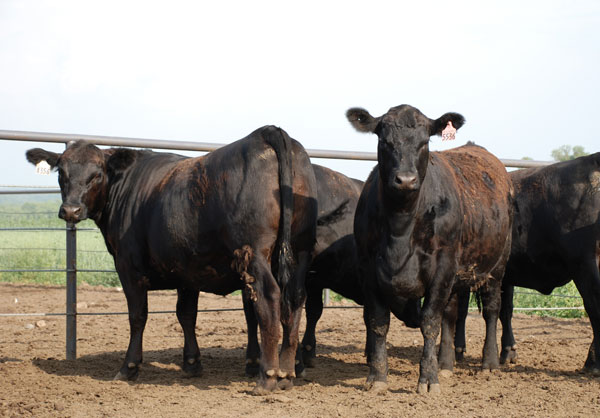2022 Heifer price discounts
More heifers on feed could mean a smaller breeding herd in 2023 and 2024.
October 5, 2022

There continues to be a high percentage of total cattle on feed that are heifers, indicating that the breeding herd will be smaller in 2023 and 2024. The steer and heifer price difference could work to slow some of these placements. Heifer calves are generally discounted relative to steers due to their tendency to finish at lower weights, with lower daily gains, and higher feed conversions. Large price differences provide incentives for heifers to be retained in the herd. This difference varies over time driven by the cattle cycle and seasonally due to the availability of total feeder cattle available to feedlots to place on feed.

Nebraska feeder cattle provide a good indicator of how these price differences have varied over time, within season, and across weight class. Price differences are larger for lighter cattle (500-599 pounds) versus heavier cattle (700-799 pounds) due to the price weight slide (see Tables 1 and 2). In Nebraska, for lighter feeder cattle, the price difference tends to be largest in winter and slowly declines through the year. For heavier feeder cattle, the price difference climbs through the year, peaking in the summer, before declining again. During the cattle cycle, price differences tend to widen during periods of contraction and narrow during periods of growth. The magnitude of these price differences varies greatly given market conditions and overall consumer demand.
However, higher prices for feeder cattle tend to expand the top end of the ranges (i.e. steer prices rise faster than heifer prices because of their ability to finish), which translates to greater heifer discounts. This is what appears to be happening this year. The price difference in both lighter and heavier feeder cattle is much larger this year than it has historically been over the last 5-years. For example, price differences in March for 500-599 pound feeder cattle have averaged $13.51 per cwt. over the last 5-years. This year, the price difference was $27.68 per cwt. In almost every month this year for both lighter and heavier feeder cattle, the price difference has been larger than the 5-year average and the largest over the past 5 years. The price difference is reflecting the higher premium for steers due to higher underlying feeder cattle prices and is providing some downward incentives to start rebuilding the beef cow herd – at least for 2024.
The actual steer–heifer price difference is still unknown for October to December 2022. Given historical patterns, one could reasonably expect the price difference to be smaller relative to price spreads earlier this year but slightly higher than the 5-year average. That would put the steer – heifer price spread, for Nebraska feeder cattle, somewhere between $15-17 per cwt. for 500-599 pound feeder cattle and $7-12 per cwt. for 700-799 pound feeder cattle. The caveat is that the steer – heifer price difference for cattle that were sold via a video auction out of the North Central region for delivery in September, October, and November suggests that this price difference could be much larger (see Table 3). Feeder cattle weighing 500-600 pounds for delivery in November have a price difference of $23.69 per cwt., considerably higher than what we would normally expect, even for this year. Of particular interest is the sharp narrowing of the price difference at heavier weights this fall (see Figure 1 above). The narrowing is entirely due to the heifer prices being nearly flat from approximately 700-900 pounds. In other words, there is a significant premium to deliver heifers at higher weights this fall which could further delay any herd rebuilding efforts.
One overarching trend that has occurred over the last 20 years is the preference for carcasses to meet restaurant steak specifications and reduce the amount of trim at processing. Under these circumstances, heifer carcasses would be preferred, and if this made up a large portion of the overall beef demand could start to affect the historical patterns of the steer–heifer price difference. However, at higher wholesale prices large carcasses could still be preferred since it would spread out some of the processing costs per carcass over additional pounds of meat.
You May Also Like


.png?width=300&auto=webp&quality=80&disable=upscale)
